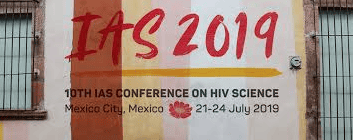
While combination treatment regimens have transformed the prospects for people with HIV, an effective preventive vaccine or cure remains elusive.
Progress on both those fronts was reported at the International AIDS Society Conference on HIV Science (IAS 2019) being held in Mexico City this week, along with a host of studies on antiretroviral therapies that can keep the virus under control and prevent its transmission.
On the preventive vaccine front, Johnson & Johnson reported new phase 1/2 data with its ‘mosaic’ vaccine, based on genes taken from a range of different subtypes of HIV-1 found around the world in an attempt to create a universal vaccine.
The new ASCENT study results showed that adding another component to the cocktail – a bivalent soluble protein (gp140) – improved the breadth of immune responses to a broad range of HIV subtypes, bringing the project one step closer to its goal of coming up with a combination that simultaneously tackles the challenge of HIV’s genetic diversity and improves efficacy.
The tendency of the virus to mutate means that conventional approaches to vaccine design have largely been ineffective, with at least four prior vaccine candidates having failed in late-stage trials. Meanwhile, those that remain in development tend to have limited efficacy and are targeted to strains in particular parts of the world.
The addition of the fourth component improved immune responses to Clade B, the predominant HIV subtype in the Americas, Western Europe and Australasia, without affecting its potency against Clade C, which is prevalent in Southern Africa, the horn of Africa, and India.
The data will support the upcoming launch of Mosaico, the first phase 3 study for this vaccine regimen that will be conducted across three continents, said Hanneke Schuitemaker, head of viral vaccine discovery and translational medicine at J&J’s Janssen pharma unit.
Janssen has already tested other cocktails in the APPROACH and TRAVERSE phase 1/2 trials, which led to the selection of a four-component shot that is being tested in the phase 3 Imbokodo study due to read out in 2021.
Another phase 3 HIV vaccine trial is also underway, using a modified version of the ‘Thai combination’ of Sanofi Pasteur’s ALVAC-HIV and GlaxoSmithKline’s bivalent gp120/MF59 that showed modest 31% efficacy in a 2009 trial.
There’s still a lot of work to do to extend the benefits of drug therapy to people around the world, and vaccines could make a critical contribution to controlling HIV in low-income countries. In 2017, 1.8m people were newly infected with HIV and nearly 1 million people died of AIDS, according to UNAIDS figures.
Eliminating the HIV reservoir
The main reason drug therapy for HIV can control but not eliminate the infection is that the virus can hide in reservoirs within blood, lymph and other tissues that protect it from exposure to antiretroviral drugs.
At IAS 2019, Gilead Sciences reported results from two studies of its toll-like receptor 7 (TLR7) agonists vesatolimod (GS-9620) and GS-986 adding to the evidence that they can induce immune activation and potentially lead to viral remission, as part of combination regimens. Earlier studies in monkeys have shown some animals were able to maintain viral suppression after the drugs were discontinued.
Meanwhile, Merck & Co/MSD presented preliminary results with a new HIV drug – islatravir (MK-8591) – that it believes could offer a year of anti-HIV activity from a single implant, rather than requiring daily dosing like current drug regimens.
Merck thinks its promise lies in pre-exposure prophylaxis, in other words it could be taken by people a high risk of contracting HIV, for example if they are in a relationship with someone carrying the virus.




